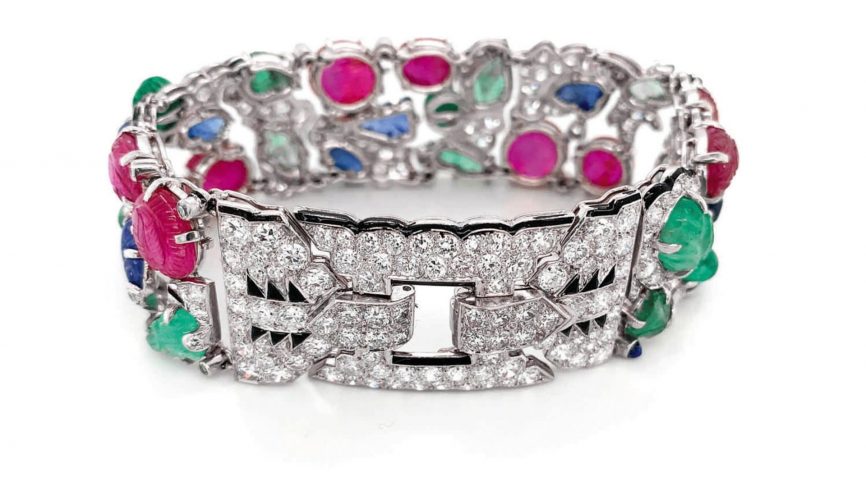RJ Market Watch
Inspired by India, this Cartier bracelet sold for Rs10 crore

A gem-set, diamond and enamel “Tutti Frutti” bracelet by Cartier has just become the world’s priciest jewellery ever sold at an online auction. Estimated to be worth between $6-8,00,000 (Rs4.5 crore) and sold for $1.34 million (approx Rs10 crore) by Sotheby’s, this sensational piece stayed with an American family for over 30 years before being put up in an online-only auction from 24-28 April 2020. It isn’t the most expensive Tutti Frutti jewellery ever sold, but this bracelet has set the jewellery record for any online sale as well as for 2020’s auctions at any house.
“Tutti Frutti jewels have always held a special allure for collectors, capturing the West’s fascination with the ‘exotic’ at a time when travel was relatively limited, much as it is today,” said Catherine Becket, head of Sotheby’s Magnificent Jewels Auctions in New York. “The result achieved for this bracelet is testament to the fact that even under the most challenging of circumstances, the demand for great art endures.” The only other item in an online sale at Sotheby’s to surpass this bracelet is Friedrich von Hayek’s Nobel Prize in Economics from 1974, sold in 2019 for $1.5million.
Bracelets are the most prized of the Tutti Frutti line, which includes necklaces, earrings and even cigarette cases. The bracelet sold in Sotheby’s just-concluded sale was created around 1930. It features a more traditional Art Deco design with its pavé-set diamond clasp, highlighted by onyx triangles and chevron-shaped closures. Pairs of rubies predominate, and detailing in black enamel casts an artful shadow on one side. The highest price ever commanded by a Tutti Frutti bracelet is $2.17 million, for a 1928 creation sold at a Sotheby’s auction in 2014. Sotheby’s online auctions in 2020 have seen an exceptional sale of 93 percent of all lots, with bidding from over 30 countries, and 30 percent of all bidders transacting for the first time with Sotheby’s.
The Tutti Frutti story

Cartier’s “Tutti Frutti” Art Deco pieces were first commissioned in 1901 by Queen Alexandra, wife of King Edward VII. Pierre Cartier fashioned a necklace from the royal jewels to match three Indian-style dresses gifted to her by Mary Curzon, Vicereine of India. A decade later, Pierre’s brother Jacques made the trip to India for the Delhi Durbar celebrations of the coronation of Queen Alexandra’s son George V as Emperor of India. Jacques returned with a client list of Indian aristocrats who would later have Cartier refashion their jewellery. He also brought back Mughal-cut gemstones that would be set in geometric platinum and diamond mountings. Each piece was unique and the collection would come to be revered as the holy grail of jewellery. When Cartier debuted these carved gemstone pieces, they were called “pierres de couleur” or coloured stones, and referred to by Jacques as “Hindou jewels”; Tutti Frutti became the chosen moniker only in the 1970s.
These Art Deco pieces were ideal Depression-era purchases, as they were the more affordable among Cartier’s most striking jewels, notes Francesca Cartier Brickell. People were drawn to the vibrant colours and exotic designs, but the pieces became iconic because of the push from influential figures such as Daisy Fellowes, French heiress to the Singer sewing machine fortune. Cartier’s Indian-style jewels were all the rage at her Oriental Ball in 1935, and Daisy went on to commission the Collier Hindou. Emeralds, rubies, diamonds and sapphires from her collection were fashioned into a necklace that could be adjusted for length Indian-style, with a black silk cord. Her daughter had Cartier recraft the necklace with a clasp of sapphires. Auctioned by Sotheby’s in 1991, the Collier Hindou was acquired by Cartier for $2.7 million.
Courtesy: cntraveller


















You must be logged in to post a comment Login